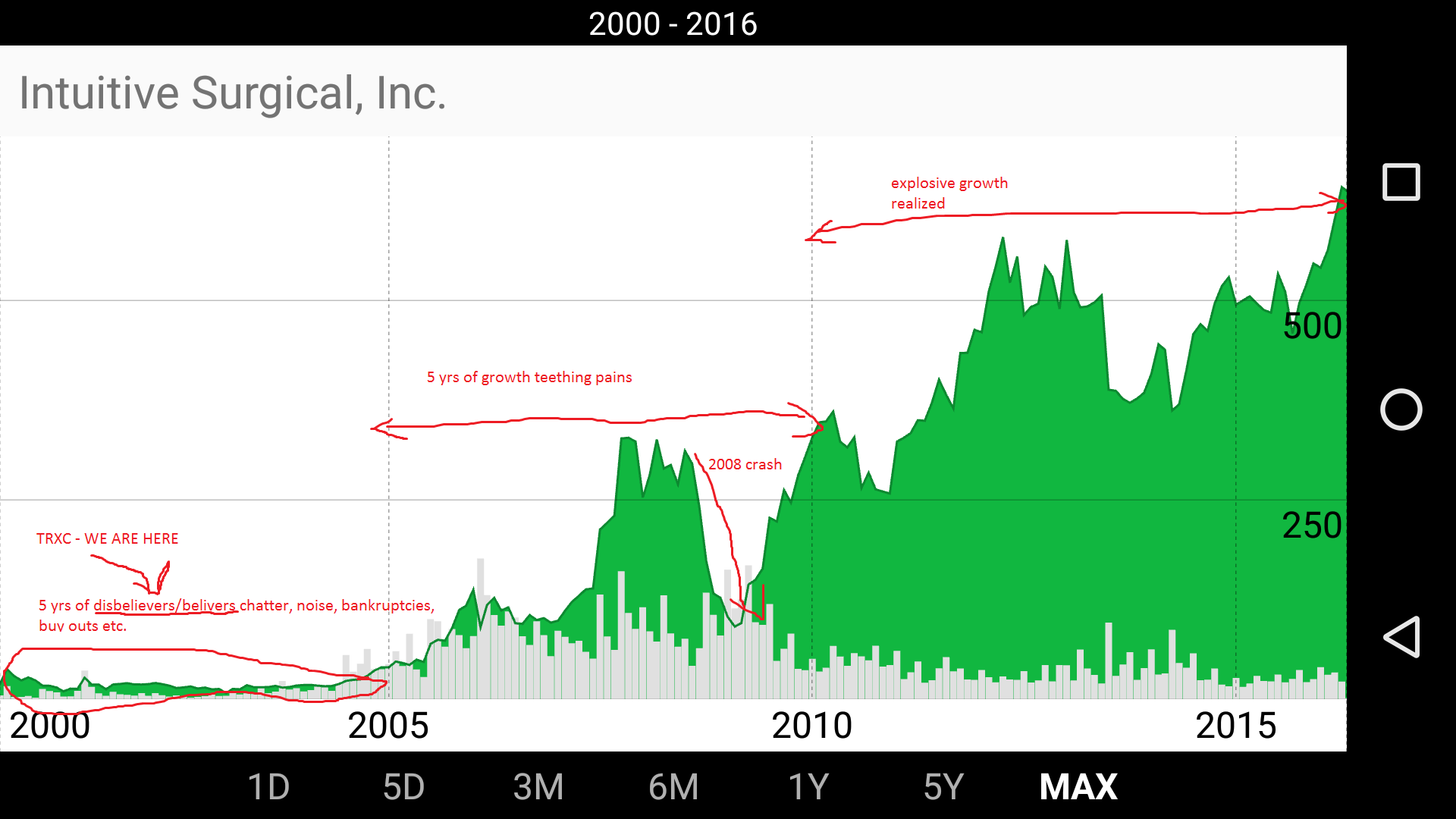If you knew a company like GOOGLE would be a monster, would you day trade it and make a few hundred bucks instead of have a long trade? This is what happens from my observation. You pull a tiny fraction out of the chart movement but failed to realize what the potential of the company is because you didn't do your homework or understand the business. I'm not here to bash, I'm here to point out "hey let's think a bit" instead of doing the same play everyday. Stats show 80 to 90% of day traders lose money. 2/10 are profitable. And the ones that make a lot of money is even a smaller percentage. OK moving on.
Take a look at ISRG for example. In 2000 it started all the way under $10 and 17 yrs later it's over $1000/share before a 1/3 split. If you invested and just leave the position untouched, imagine the return. But everyone wants to see quick realized profit in their bank account. I don't blame you, but sometimes you end up losing back more than you gain and spinning wheels (unless you're really really good at day trading). It is difficult winning on a short time frame. Cutting loses when in fact you were in a winning LONG position. I'm using this ISRG chart to compare to TRXC. This is where TRXC is today and it's potential is 40 Billion. So just hold it instead of winning a few hundred bucks or even a few thousand. PATIENCE is more than just an hour time frame! FOOD FOR THOUGHT!
Received 2 Karmas
Thanks for the "food for thought". First, you are right. Looking back, we see some wellknown stocks and their impressive long-term returns. BUT, you just don't know it when these companies are starting out. There are quite a few examples where similar stocks rose impressively and then with one bad announcement or a better competitor, the stocks tanked 80%. Most long-term investors have no exit plan. But day and swing traders do.
Instead of just "hold and forget", it can be more lucrative to sell all or most of the position into spikes and enter again with more shares (with the profits gained from the spikes) on dips or retracements. This way, the long-term traders/investors are more in control and can compound profits. At the same time, this kind of swing trading strategy would make people more aware of the overall market and the individual stocks, which could prevent them from experiencing a major loss.
Selling and re-entering is a good play if you can predict events. Selling too early and leaving the stock if the company has a lot more fully peaked is bad. I am reminded my sell of NVDA at $33. Lesson to be learned from day trading! You have to monitor their business. Are they improving ER or declining. Sometimes you need to just have some faith and let them do their thing. When you smell something bad then pull half out or close position.
Join now or log in to leave a comment